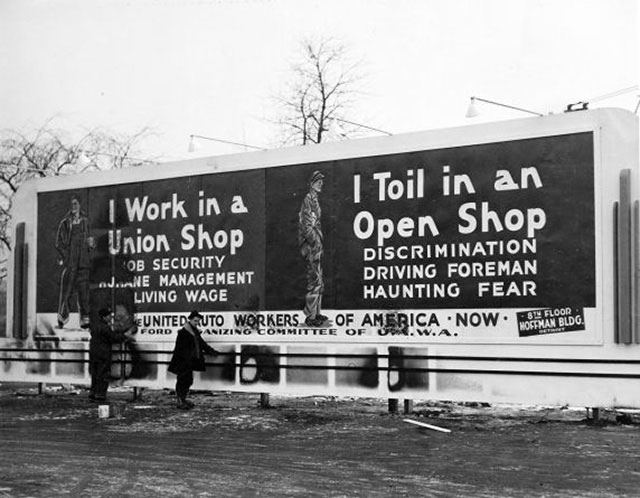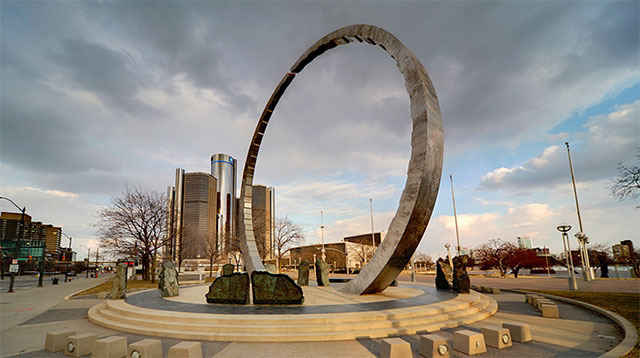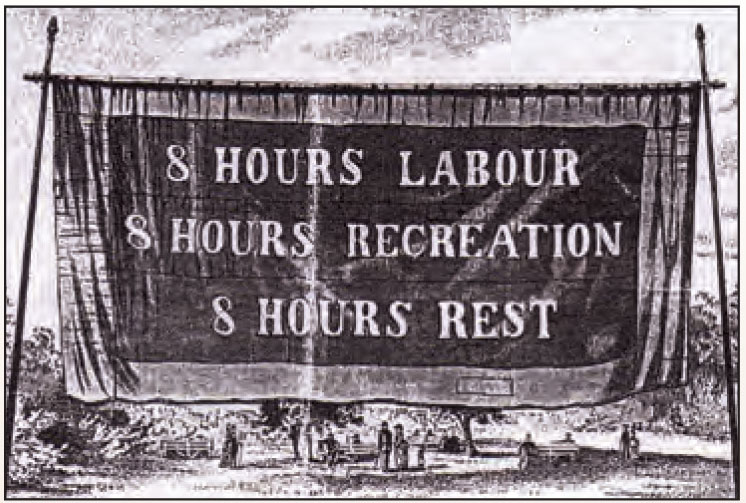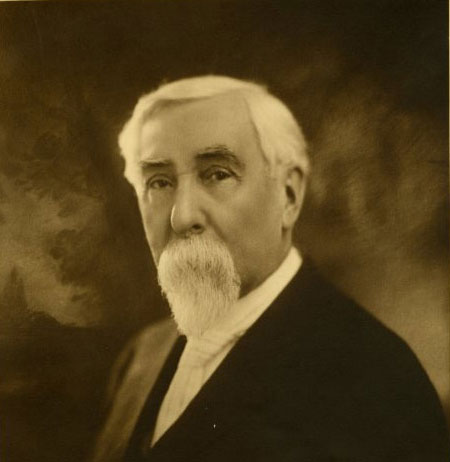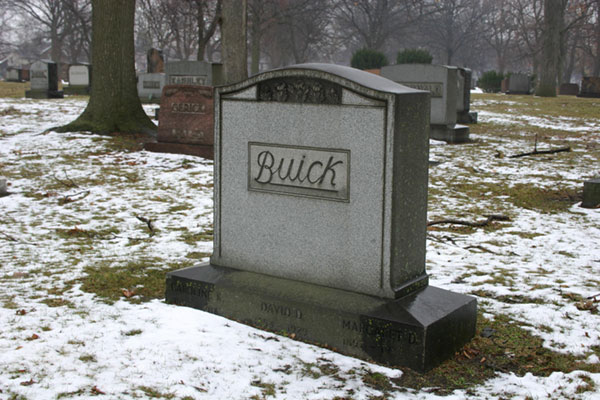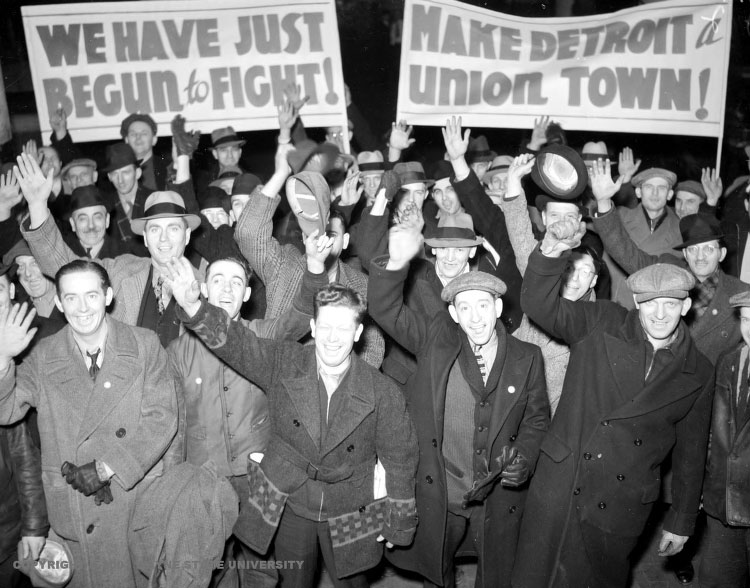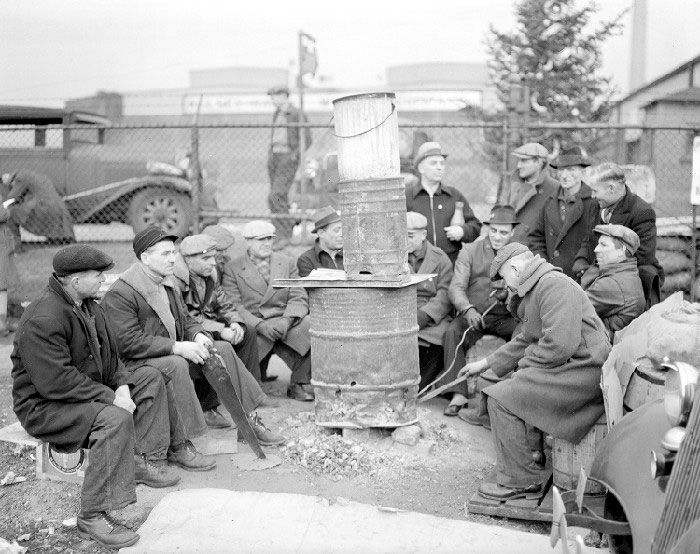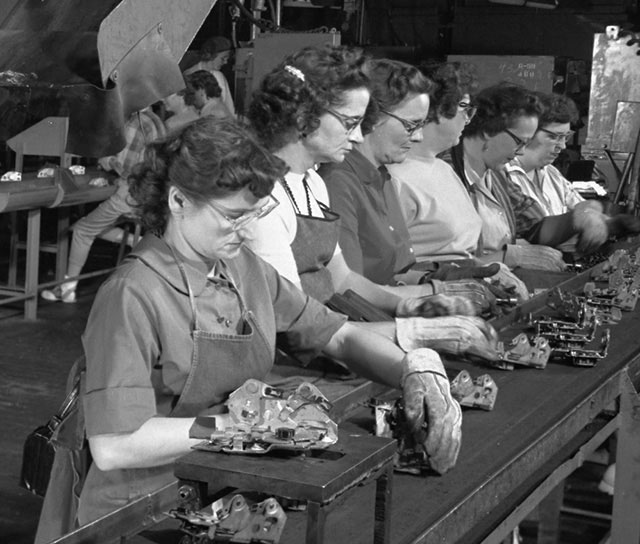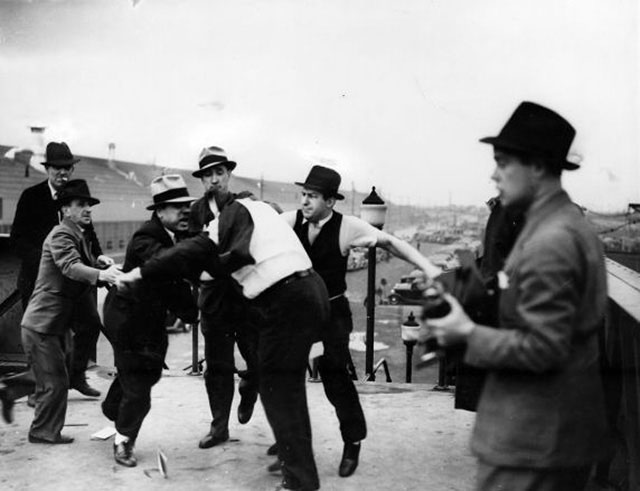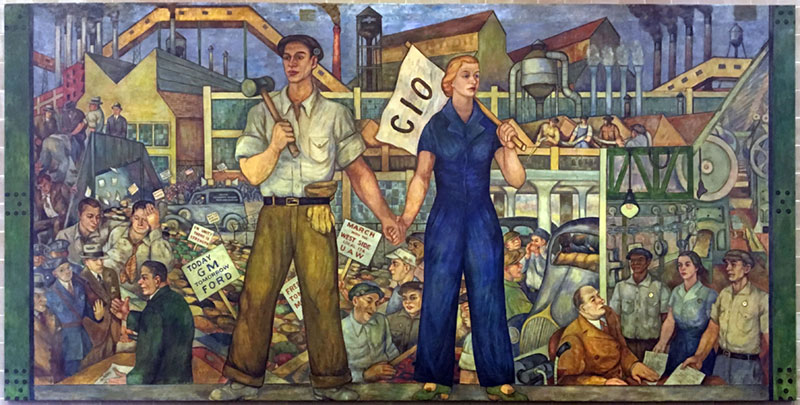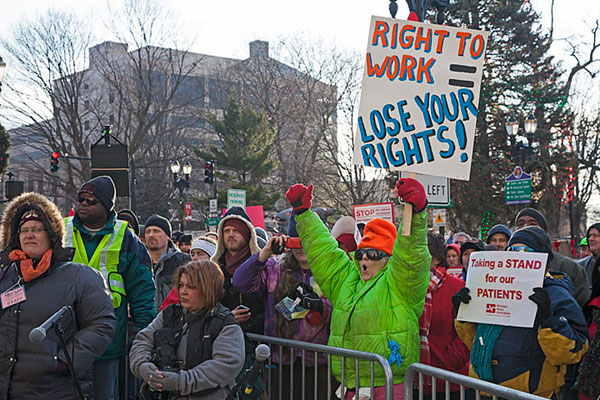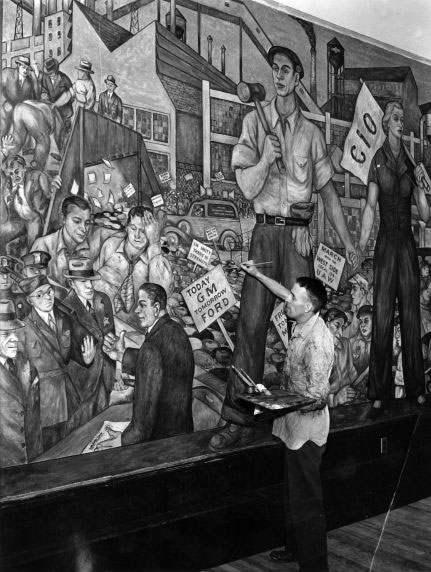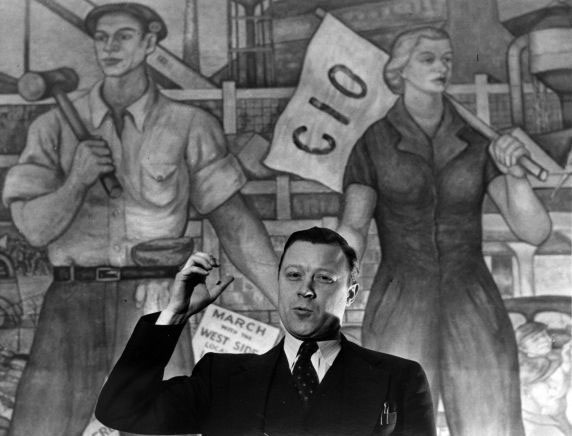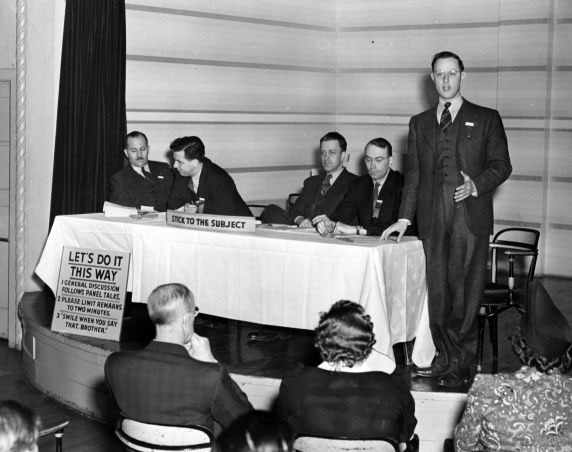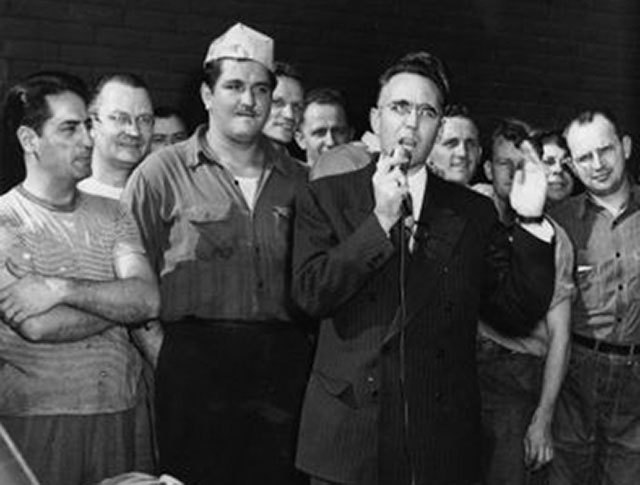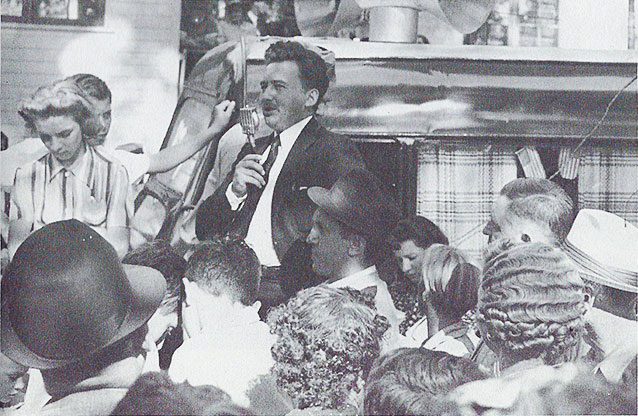
For those who don’t have much familiarity with labor history, David Elsila’s "A Labor Perspective" post that follows introduces organized labor’s roots in Southwest Detroit, while the Dreaming of a Better Future essay offers a sense of the spirit that informs the union movement.
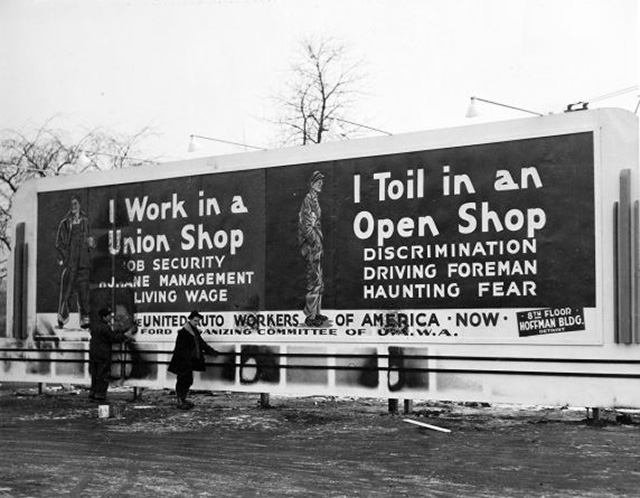 UAW Ford Organizing Campaign Billboard (Late 1930s)
UAW Ford Organizing Campaign Billboard (Late 1930s)
“If I worked in a factory, the first thing I would do would be to JOIN A UNION.”
-President Franklin Delano Roosevelt, from a CIO organizing poster (circa 1930)
The choices highlighted in the Ford organizing campaign billboard are still with us today. The benefits of the Union Shop were at the heart of the unsuccessful 2012 ballot proposal to incorporate the rights to collective bargaining into the Michigan Constitution. Its opponents, who later enacted “Right to Work” laws, echoed the arguments made almost a century ago by Open Shop advocates like auto pioneer Henry Leland. The terms of the social contract between managers and workers have been contested for almost a century and a half with Southwest Detroit at center stage on many occasions.
It's worth recalling that in 1883 the first annual report of the Michigan Bureau of Labor and Industrial Statistics observed and also decried the use of child labor in Southwest Detroit brickyards. The lack of a living wage for male industrial workers meant that all members of the family, including children, often had to work for the family to survive. Mothers toiled from sunrise to sunset for meager wages that allowed them to live only in “filthy, dilapidated, little hovels” opening onto muddy alleyways. In the face of desperate circumstances such as these, who was able give voice to those who were disenfranchised? What forms of organization best served the interests of workers and the unemployed? How were the political and community alliances forged to advance the banner of social justice?
For many, the answer was the union.
A Labor Perspective: This link takes the reader to the complete essay that has been used to introduce this page
Dreaming of a Better Future An excerpt from the Michigan Labor History Society’s Labor’s Legacy Landmark Dedication Program Booklet
The following posts provide detailed discussions of noteworthy events and key issues of interest to labor activists. The Guide’s team is currently working on posts that will highlight the 1941 UAW campaign to win a contract at Ford. That treatment will also chronicle the pivotal contributions of African American workers to the modern Civil Rights movement.
Click to view:
Fighting for the Eight Hour Day - A Michigan Labor History Society newsletter feature highlighting the 1886 campaign to win the Eight Hour Day at American Car Foundry
Henry Leland - A discussion of employer resistance to unions at the turn of the 20th century
Woodmere Cemetery - An exploration of the hardships of the Great Depression of the 1930s
Ford Hunger March - The excerpt from the Guide’s Woodmere Cemetery post traces the hardship of the Great Depression of the 1930s and commemorates the Ford Hunger March
The Rise of the United Auto Workers Union - This post highlights the explosive growth of the UAW’s early years 1936 – 1938
Kelsey-Hayes Sit Down Strike - A Michigan Labor History Society newsletter tribute to the Kelsey Hayes sit down strike that preceded the campaign to win the 1937 General Motors contract
Ternstedt Women Organize - This Michigan Labor History Society newsletter article focuses on the 1937 organizing efforts of women workers at Ternstedt
Battle of the Overpass - This Michigan Labor History Society newsletter article recounts the attack by Ford security men on UAW leafleteers
West Side Local #174 Holds the Fort - An account of the 1938 Federal Screw Works strike that protected labor’s gains during the 1938 recession
Autoworkers and their Industry - The Guide team’s overview of the advances and challenges autoworkers confronted in the years following World War II to the present
"Right to Work" Comes to Michigan - A summary of the 2012 legislative effort that established Michigan as a “Right to Work” state
Ghost Hunting at Local 174 - A personal reflection on the meaning of the union, as told by one who was charged with reviewing its records
Click here to view:
Biographies of five UAW Local 174 activists who were key to building the local and all of whom held prominent union offices or had distinguished public service careers.



